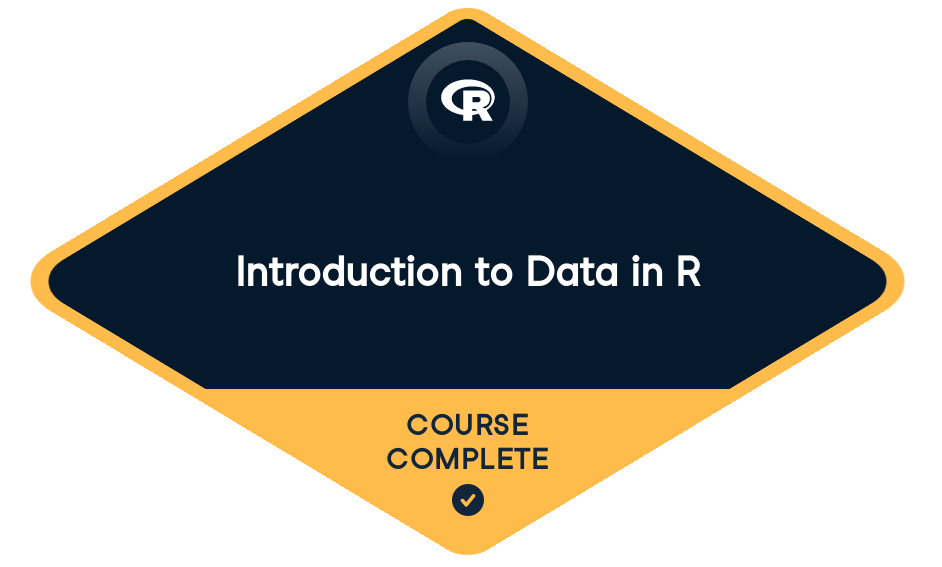
Loved by learners at thousands of companies
Course Description
Scientists seek to answer questions using rigorous methods and careful observations. These observations—collected from the likes of field notes, surveys, and experiments—form the backbone of a statistical investigation and are called data. Statistics is the study of how best to collect, analyze, and draw conclusions from data. It is helpful to put statistics in the context of a general process of investigation: 1) identify a question or problem; 2) collect relevant data on the topic; 3) analyze the data; and 4) form a conclusion. In this course, you'll focus on the first two steps of the process.
Training 2 or more people?
Get your team access to the full DataCamp platform, including all the features.- 1
Language of data
FreeThis chapter introduces terminology of datasets and data frames in R.
Welcome to the course!50 xpLoading data into R100 xpTypes of variables50 xpIdentify variable types100 xpCategorical data in R: factors50 xpFiltering based on a factor100 xpComplete filtering based on a factor100 xpDiscretize a variable50 xpDiscretize a different variable100 xpCombining levels of a different factor100 xpVisualizing numerical data50 xpVisualizing numerical and categorical data100 xp - 2
Study types and cautionary tales
In this chapter, you will learn about observational studies and experiments, scope of inference, and Simpson's paradox.
Observational studies and experiments50 xpIdentify type of study: Reading speed and font50 xpIdentify type of study: Countries100 xpRandom sampling and random assignment50 xpRandom sampling or random assignment?50 xpIdentify the scope of inference of study50 xpSimpson's paradox50 xpNumber of males and females admitted100 xpProportion of males admitted overall100 xpProportion of males admitted for each department100 xpAdmission rates for males across departments50 xpRecap: Simpson's paradox50 xpIdentify type of study: Countries [new]50 xp - 3
Sampling strategies and experimental design
This chapter defines various sampling strategies and their benefits/drawbacks as well as principles of experimental design.
Sampling strategies50 xpSampling strategies, determine which50 xpSampling strategies, choose worst50 xpSampling in R50 xpSimple random sample in R100 xpStratified sample in R100 xpCompare SRS vs. stratified sample50 xpPrinciples of experimental design50 xpIdentifying components of a study50 xpExperimental design terminology50 xpConnect blocking and stratifying50 xp - 4
Case study
Apply terminology, principles, and R code learned in the first three chapters of this course to a case study looking at how the physical appearance of instructors impacts their students' course evaluations.
Training 2 or more people?
Get your team access to the full DataCamp platform, including all the features.collaborators


prerequisites
Introduction to the TidyverseAssociate Professor at Duke University & Data Scientist and Professional Educator at RStudio
Join over 18 million learners and start Introduction to Data in R today!
Create Your Free Account
or
By continuing, you accept our Terms of Use, our Privacy Policy and that your data is stored in the USA.